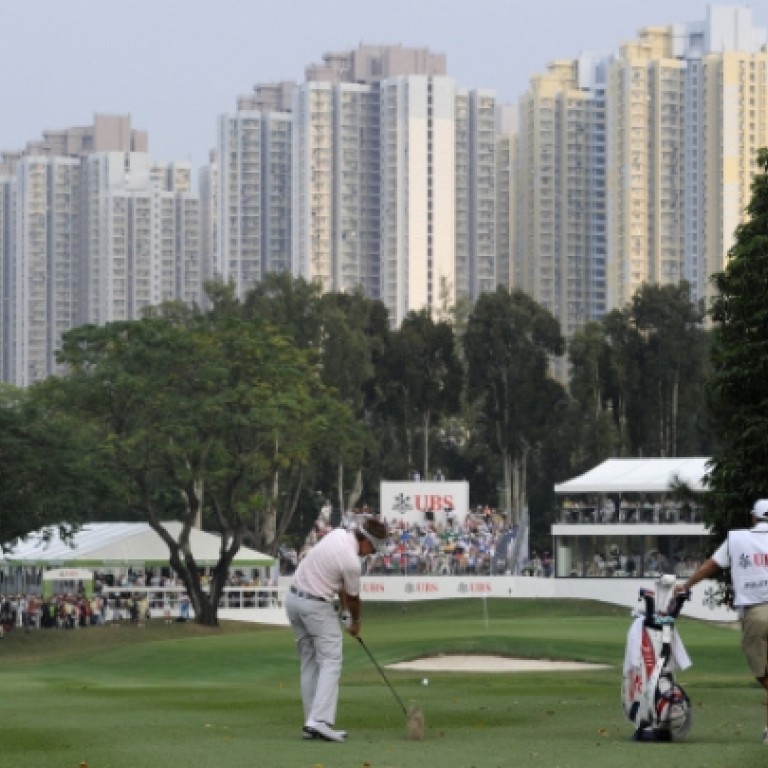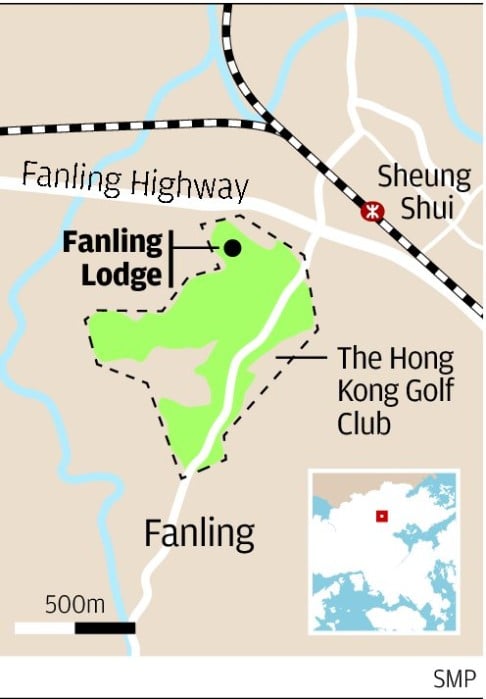
Hong Kong Golf Club open to losing Fanling courses to housing, lawmaker says
Fanling Club management 'open' to considering government plans for housing at venue of the oldest professional golfing tournament in Asia
The prospect of the city's most prestigious golf club being ploughed up for housing has moved a step closer, with a lawmaker saying its management had raised no objection to the idea at a recent meeting.
Secretary for Development Paul Chan Mo-po said on Friday there was scope for reviewing the use of the 170 hectares of land at Fanling occupied by the Hong Kong Golf Club, the host since 1959 of Asia's oldest professional golf tournament - the Hong Kong Open.
Yesterday Chan said Fanling Lodge - the summer residence of colonial governors and, since 1997, of chief executives - and adjoining golf club land could make way for housing.

Environmental group Green Sense has suggested using the golf club land for housing instead of taking farmland and demolishing village homes to build the new towns.
And on Thursday villagers in the northeastern New Territories, whose fields and homes in the area are also under threat of eventually being taken for housing, threatened to occupy the golf club unless the government scrapped its plans.
Dr Fernando Cheung Chiu-hung, a Labour Party lawmaker for New Territories East, said senior managers of the Hong Kong Golf Club expressed sympathy for the idea of redeveloping the Fanling club at a meeting with pan-democrats last month.
"When we told them there were views that all the courses should be resumed and redeveloped, they said they were willing to co-operate and would see what the government plan was," said Cheung, who talked to the board chairman and chief executive of the club.
Chan, however, said the land lease of the golf courses would not expire until 2020 and it would take years to redraw plans for the new towns.
"It should not be seen as a substitute," he said on radio.
A spokesman for the club declined to comment.
Under the terms of its lease, the government needs to give 12 months' notice, but no compensation, if it takes back the land.
Chan revealed the government's intention to review the use of the lodge and golf course land only after his announcement of the new-town developments on Thursday met with opposition. His statements have been seen by some as an attempt to avoid angering the public.
Green Sense president Roy Tam Hoi-pong said the group would propose its own development plan in September.
Tam said the land could provide homes for 120,000 people. As currently planned, the two new towns would provide homes for 174,900 people.
The group's plan for the land would include sites for recycling businesses, he said.

Civic Party lawmaker Ronny Tong Ka-wah, a golf player, although not a member of the club, said he did not think "the city should fill every inch of green and leisure space with flats" and questioned whether the land was enough for a new town.
Pro-establishment lawmaker Ann Chiang Lai-wan said: "The long history of the club is part of the city's collective memory. Instead of removing it, the government should force it to review its membership policy and make it more open to the public."
Fanling Facts
- Two-storey, five-bedroomed country house built in 1934
- Designed by the then public works department at a cost HK$140,000
- A summer residence for Hong Kong colonial governors, and for chief executives
- Assigned to the British armed forces from 1947 to 1957
- Housed Prince Charles in 1994 and then-British prime minister John Major in 1996
- Has a helicopter landing pad on the lawn allowing the chief executive to travel to the lodge by air
- Covers 170 hectares
- Comprises three 18-hole courses built in 1911, 1931 and 1970 respectively
- Has Hosted Hong Kong Open tournament since 1959
- The Half Way House inside, built in 1916, is a grade II historic building

